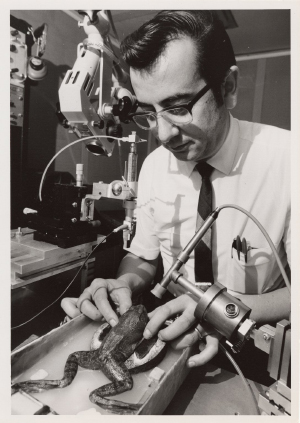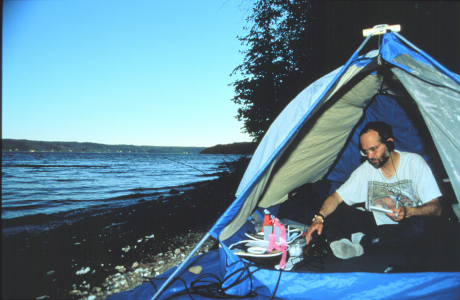Neurobiology and Behavior celebrates 50 years
By Kathy Hovis

When professors Dick O’Brien, Thomas Eisner and William Keeton were first thinking about creating Cornell’s Department of Neurobiology and Behavior (NBB) in 1964, they knew they were pushing an envelope.
Although the culture of collaboration runs deep at Cornell, when it comes to combining people from different departments into a brand new academic unit, it’s not an easy sell.
But an external committee reporting to Cornell President James Perkins had found that research and teaching in biology was fragmented, with inadequacies and gaps. That group recommended a new unit with a new vision.
“We knew that neuroscientists understood behavior, in a general sense, but there was a need to fortify their education in the building blocks of behavior,” said Thomas Seeley, former chair of NBB. “This required including faculty based in the College of Agriculture and Life Sciences who studied what animals do when living in nature. At the same time, the tools for neuroscience come from engineering, physics, computational biology and math, so a natural home for other members of the NBB faculty was the College of Arts and Sciences.”
Today, the department remains “shared” by the two colleges.
The new department combined, for the first time anywhere, the study of behavior typically done in zoology and psychology departments with the study of neurobiology, which at that time was taught mainly in medical schools, said Kraig Adler, another former chair of the department.
“We used to hire people with specialties in only one area, but now we were hiring people who could talk to both behaviorists and neurobiologists,” Adler said.
This experiment that became a new type of department has been a success, all say, with other universities using Cornell as a model for their academic reorganizations, and many graduates of the Cornell program using their degrees in professions as diverse as academia, engineering, animal science, medicine and journalism.


The department will celebrate its 50th anniversary by welcoming doctoral alumni to a Nov. 1 celebration and scientific program. About half of the department’s former students, which include more than 200 doctoral students, plan to return for the event.
Harold Zakon, Ph.D. ’81, professor of neurobiology at the University of Texas, Austin, is organizing the alumni presentations at the event.
“In the early 1970s, I was working as a research technician in psychiatric research at Harvard Medical School, but spending my weekends birding and reading books on ethology by Konrad Lorenz and Niko Tinbergen,” Zakon said. “The ‘aha! moment’ for me was reading an article by Mark Konishi about a new field called ‘neuroethology,’ which showed me that I could unite my interests in neurobiology and animal behavior. This article talked about the work of people like Tom Eisner, Bob Capranica and Ron Hoy, so I decided I had to go to Cornell to pursue my passion.”
When Cornell’s NBB department began, it combined faculty from the departments of biochemistry, entomology and zoology, plus faculty from other departments. Only later did faculty in psychology and conservation join the lineup at NBB.
“NBB was a model for me on how to integrate and move seamlessly between levels of organization in biological systems,” Zakon said. “What I learned in NBB was the value of vertical integration and to have the confidence to move into a new area. NBB made me see that staying bound by a technical approach is very intellectually limiting.”
Kathy Hovis is a writer for the College of Arts and Sciences.
Get Cornell news delivered right to your inbox.
Subscribe